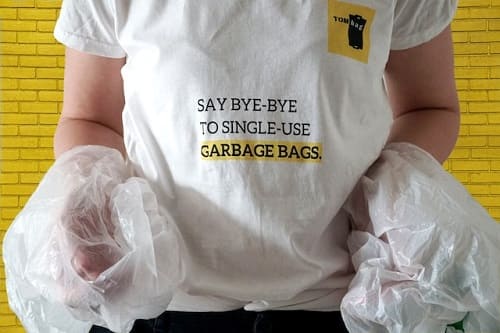Celebrating a Sustainable Diwali
The Promise of Green Crackers and Reduced Carbon Emissions

Introduction
Diwali, the festival of lights, is celebrated with great enthusiasm and fervor in India. It's a time for family gatherings, the exchange of gifts, and, of course, the traditional bursting of firecrackers. However, the joyous celebration has often been overshadowed by the concerning issue of pollution, especially air and noise pollution. This has prompted the development of a sustainable alternative - Green Crackers. In this blog, we'll explore what green crackers are, their types, and the advantages they offer over traditional crackers, while highlighting their significance in reducing pollution and promoting a circular economy.
Green Crackers: An Eco-Friendly Solution
Green crackers are a significant step towards sustainable celebrations, and they have been defined by the CSIR-National Environmental Engineering Research Institute (CSIR NEERI) as firecrackers made with a reduced shell size, without ash, and/or with additives such as dust suppressants to reduce emissions, specifically particulate matter. These crackers do not contain harmful chemicals and contribute less to air pollution and noise pollution.
What Are Green Crackers?
Green crackers are an environmentally friendly solution to India's air pollution problems and a step towards efforts to combat climate change. They have been designed to emit pollutants at a 30% lesser rate than their conventional counterparts, making them a promising alternative for those who want to enjoy the festive spirit without contributing to environmental degradation.
The Types of Green Crackers
In India, green crackers were introduced in 2019 and currently come in three types, each designed to reduce emissions and noise levels:
1. SWAS (Safe Water Releaser)
SWAS crackers release water vapor instead of certain key pollutants. These crackers do not use sulfur or potassium nitrate, making them a cleaner and more environmentally responsible choice. They also deploy the use of diluents, which helps control particulate matter (PM) emissions by up to 30%.
2. STAR (Safe Thermite Cracker)
STAR crackers, like SWAS, do not contain sulfur and potassium nitrate. They also reduce particulate dust emissions and have lower sound intensity compared to traditional firecrackers.
3. SAFAL (Safe Minimal Aluminium)
SAFAL crackers minimize the usage of aluminum, using magnesium in its place. This substitution results in reduced levels of pollutants and less environmental impact. Additionally, they offer reduced sound intensity.
Identification of Green Crackers

To differentiate green crackers from traditional ones, a green logo and a Quick Response (QR) coding system have been developed. Manufacturers interested in producing green crackers must sign an agreement with the CSIR to adhere to the green cracker formulation.
Advantages of Green Crackers
Green crackers have several advantages over traditional crackers:
1. Less Pollution
Every year, the air quality declines, especially during the winter when smog (smoke + fog) becomes a menace, primarily after the festival of Diwali. Green crackers in India have a positive impact on this situation by reducing air pollution.
2. Fewer Accidents
Traditional firecrackers are loud and produce an intense spark, leading to many accidents. Green crackers have controlled sound and intensity, reducing the likelihood of such accidents.
3. Reduced Emissions
The raw materials used in green crackers are less polluting, and the particle emission into the atmosphere is reduced by suppressing the dust. These crackers release water vapor or air as a dust suppressant and for diluting the gaseous emissions.
Disadvantages of Green Crackers
Despite their advantages, green crackers also have some disadvantages:
1. Limited Availability
Currently, only licensed manufacturers approved by the CSIR can produce green crackers, limiting their availability compared to traditional crackers.
2. Unemployment
Traditional cracker industries may face challenges as only approved manufacturers can produce green crackers, potentially leading to unemployment in this sector.
3. Availability of Raw Materials
Not all raw materials for green crackers are easily accessible to all manufacturers, making it challenging for some to adopt the green alternative.
The Significance of Green Crackers in a Circular Economy

Green crackers are not only a solution to the issue of pollution during festive seasons but also represent a significant step towards a circular economy. A circular economy is an economic system aimed at minimizing waste and making the most of resources. Green crackers align with the principles of a circular economy in several ways:
1. Reduced Waste
The reduced shell size and fewer emissions in green crackers contribute to less waste generation, promoting a sustainable and environmentally responsible approach to celebration.
2. Responsible Resource Use
By using alternative, less-polluting materials, green crackers demonstrate responsible resource utilization. These materials are carefully chosen to minimize harm to the environment.
3. Innovation
The development and production of green crackers require innovation in the firecracker industry, encouraging manufacturers to find eco-friendly alternatives.
Challenges and the Way Forward
Despite the advantages, green crackers face challenges related to availability, raw materials, and employment in traditional cracker manufacturing units. To address these issues and ensure the success of green crackers, several steps can be taken:
1. Promotion and Awareness
Governments and organizations should promote green crackers and educate the public about their benefits. Awareness campaigns can encourage consumers to choose eco-friendly options.
2. Regulatory Support
Governments can provide incentives and regulatory support to encourage manufacturers to adopt green cracker production. This can include grants, subsidies, and simplified licensing processes.
3. Collaborations
Collaboration between government bodies, environmental organizations, and the firecracker industry can foster innovation and sustainable production practices.
4. Market Expansion
Efforts should be made to expand the availability of green crackers to ensure consumers have access to environmentally responsible options.
Conclusion
Green crackers offer a sustainable solution to the pollution challenges associated with Diwali celebrations. These eco-friendly firecrackers reduce particulate matter pollution, limit accidents, and lower emissions, making them a responsible choice for those who wish to enjoy the festival while being mindful of the environment. By aligning with the principles of a circular economy, green crackers show the way forward for celebrating festivals without harming the planet. However, to fully embrace this sustainable alternative, we need concerted efforts from governments, manufacturers, and consumers to make green crackers more accessible and widely adopted. With the promise of reduced pollution and a cleaner environment, green crackers are lighting the path towards a brighter, more sustainable Diwali.




